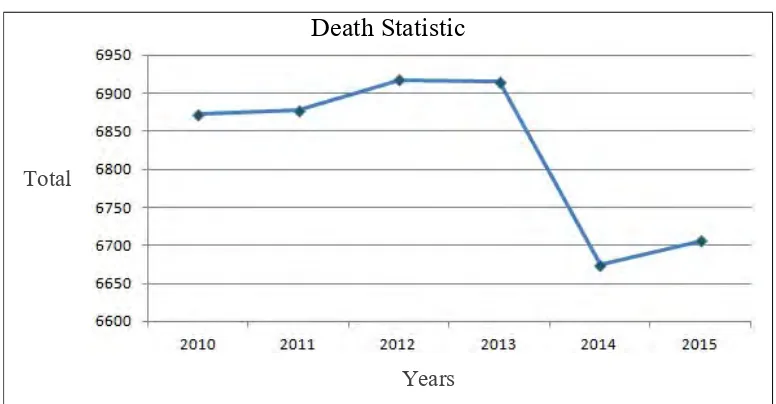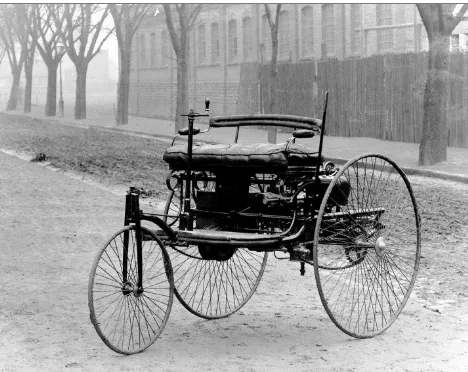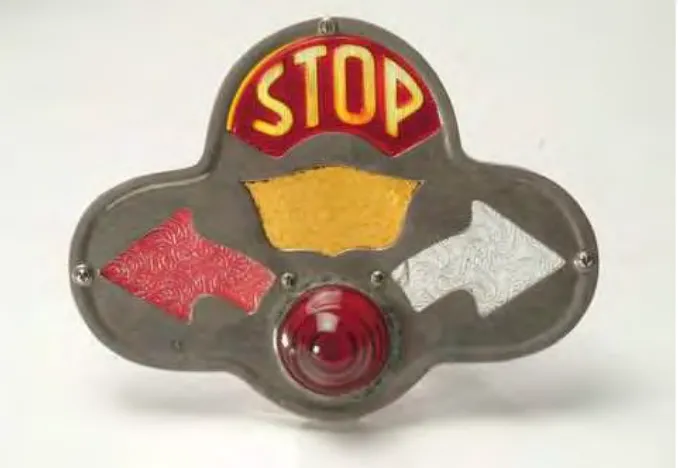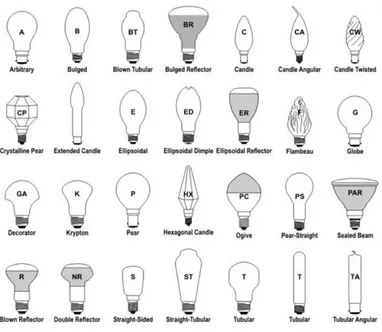UNIVERSITI TEKNIKAL MALAYSIA MELAKA
DESIGN AND DEVELOPMENT OF PORTABLE U-TURN
SIGNAL SYSTEM FOR MOTOR VEHICLE
This report is submitted in accordance with the requirement of the Universiti Teknikal Malaysia Melaka (UTeM) for the Bachelor of Mechanical Engineering
Technology (Automotive Technology) with Honours
by
MUHAMMAD ‘AZIM SANIY BIN MAZELAN B071410493
950803-08-6389
UNIVERSITI TEKNIKAL MALAYSIA MELAKA
BORANG PENGESAHAN STATUS LAPORAN PROJEK SARJANA MUDA
TAJUK: Design and Development of Portable U-turn Signal System for Motor Vehicle
SESI PENGAJIAN: 2017/18 Semester 1
Saya MUHAMMAD ‘AZIM SANIY BIN MAZELAN
mengaku membenarkan Laporan PSM ini disimpan di Perpustakaan Universiti Teknikal Malaysia Melaka (UTeM) dengan syarat-syarat kegunaan seperti berikut:
1. Laporan PSM adalah hak milik Universiti Teknikal Malaysia Melaka dan penulis. 2. Perpustakaan Universiti Teknikal Malaysia Melaka dibenarkan membuat salinan
untuk tujuan pengajian sahaja dengan izin penulis.
3. Perpustakaan dibenarkan membuat salinan laporan PSM ini sebagai bahan pertukaran antara institusi pengajian tinggi.
4. **Sila tandakan ( )
SULIT
TERHAD
TIDAK TERHAD
(Mengandungi maklumat yang berdarjah keselamatan atau kepentingan Malaysia sebagaimana yang termaktub dalam AKTA RAHSIA RASMI 1972)
(Mengandungi maklumat TERHAD yang telah ditentukan oleh organisasi/badan di mana penyelidikan dijalankan)
Alamat Tetap:
No. 80, Kampung Masjid Temelok, 34800 Trong,
Perak
Tarikh: ________________________
Disahkan oleh:
Cop Rasmi:
Tarikh: _______________________
DECLARATION
I hereby, declared this report entitled “Design and Development of Portable U-turn Signal System for Motor Vehicle” is the results of my own research except as cited
in references.
APPROVAL
This report is submitted to the Faculty of Engineering Technology of UTeM as a partial fulfillment of the requirements for the degree of Bachelor of Mechanical Engineering Technology (Automotive Technology) with Honours. The member of the supervisory is as follow:
i
ABSTRAK
ii
ABSTRACT
iii
DEDICATION
I would like to give a special thanks for My beloved parents
iv
ACKNOWLEDGEMENT
I would like to thank to my supervisor, Madam Nurul Amira Binti Zainal, for her guidance,support,and constant encouragement during my study for bachelor degree project at Universiti Teknikal Malaysia Melaka (UTeM).
v
Table of Content
Abstrak i
Abstract ii
Dedication iii
Acknowledgement iv
Table of Content v
List of Figures viii
List of Tables x
CHAPTER 1: INTRODUCTION
1.0 Introduction 1
1.1 Background of Study 1
1.2 Problem Statement 4
1.3 Objectives 4
1.4 Scope 5
CHAPTER 2: LITERATURE REVIEW
2.0 Introduction 6
2.1 History 6
2.1.1 History of Signal System 6
2.1.2 History of LEDs 9
2.2 Overview of Turn Signal Sytem 9
2.2.1 Type of Signal 10
2.3 Light Emitting Diode (LED) 11
2.3.1 Type of LEDs 11
2.3.1.1 Bi-Colour and Tri-Colour LEDs 12 2.3.1.2 Red, Green, Blue (RGB) LEDs 13 2.3.1.3 Various Sizes of LEDs 13
2.4 Flasher Relay 15
vi 2.4.1.3 Thermal Flasher Relays 21 2.4.1.4 LED Flasher Relays 22
2.5 Solar Panel 23
2.6 Rechargeable Alkaline Battery 25 2.7 Non-Rechargeable Battery 27
2.8 9 Volt Battery 30
2.9 Liquid Metal Battery 31
CHAPTER 3: METHODOLOGY
3.0 Introduction 33
3.1 Overall Process 33
3.2 Project Planning 34
3.3 Literature Review 37
3.4 Designing The System 37 3.4.1 AutoCad 2018 Software 37
3.4.2 Scilab Software 38
3.5 Developing The System 39 3.6 Optimizing Power Supply 40
3.7 Collecting Data 41
CHAPTER 4: RESULT AND DISCUSSION
4.0 Introduction 42
4.1 Components 42
4.2 Circuit Design 43
4.2.1 Source circuit 44
4.2.2 Output circuit 45
4.2.3 Action circuit 46
4.3 Prototype Design 48
4.4 Problems Faced 50
4.4.1 Scilab Software 50
4.4.2 Flasher relay 51
vii
4.5 Tabulating Data 52
4.6 Plotting Data 53
4.7 Discussion 53
4.7.1 Comparison 53
4.7.2 Optimized Power Supply 54
CHAPTER 5: CONCLUSSION AND FUTURE WORK
5.0 Introduction 55
5.1 Conclussion 55
5.2 Future Work 56
viii
List of Figures
Figure 1.1: Accident Statistic 3 Figure 1.2: Death Statistic 3 Figure 2.1: 1885 Benz Patent Motorwagen 7 Figure 2.2: Oscar J. Simler’s handmade turn signal 8
Figure 2.3: Type of Bulb 10
Figure 2.4: Bi-Colour and Tri-Colour LEDs 12 Figure 2.5: Red, Green, Blue (RGB) LEDs 13
Figure 2.6: 1.8mm LED 14
Figure 2.7: 3.0mm LED 14
Figure 2.8: 5.0mm LED 14
Figure 2.9: Schematic Diagram of Heat-Collecting Plate 23
Figure 2.10: Solar Panel 25
Figure 2.11: Rechargeable Alkaline Battery 27 Figure 2.12: Non Rechargeable Alkaline Batteries 27 Figure 2.13: Specific Energy Comparison of Secondary And Primary Batteries. 29 Figure 2.14: Energy Comparison Underload. 30 Figure 2.15: 9 Volt Battery 30
Figure 3.1: Gantt Chart 35
Figure 3.2: Flow Chart Process 36
Figure 3.3: AutoCAD 2018 38
Figure 3.4: Scilab Software 39 Figure 3.5: Solder Iron and Solde Wire 40 Figure 3.6: Example of Bar Chart 41 Figure 4.1: Power Source Circuit 44 Figure 4.2: Schematic Diagram for Output/LEDs 45 Figure 4.3: LEDs Arrangement Shows U-turn Sign 46 Figure 4.4: Initial Circuit Drawing. 47 Figure 4.5: Final Flasher Circuit. 48
Figure 4.6: LED Design 49
ix Figure 4.8: Prototype of the U-turn Signal 50
x
List of Tables
Table 2.1: Electro-Mechanical Flasher Relays ... 15
Table 2.2: Electronic Flasher Relays ... 17
Table 2.3: Thermal Flasher Relays ... 21
Table 2.4: LED Flasher Relays ... 22
Table 3.1: Example Table of Lifespan Data. ... 41
Table 4.1: List of Component for Action Circuit ... 43
1
CHAPTER 1
INTRODUCTION
1.0 Introduction
In this chapter, overall study including the background, problem statements, objectives, scope and the result expectation of the study is discussed.
1.1 Background of Study
Travel by land vehicle is something that really exciting activities to do for. Long journey is definitely an awesome memory to have. In order to reach the destination, there are a lot of changing direction whether left or right or may be it can be a 180 degree of turn which known as a U-turn. Every single vehicle that existed was built with assist. Assistance that vehicle needed the most is signal system. There are many type of signal system in a vehicle. Signal that appeared to notify the owner or driver that are located on the panel or meter, and signal to give information to other road users. This signal actually let the driver communicate indirectly.
Signal system in vehicles is familiar to human being especially signal that are to notify other road users. Its function is to show an intended change of direction, whether turning left or right or moving out into traffic. This system was created blinking so that it can get human attention and get informed what the other vehicle going to do.
2 many type of light too. As examples, signal using common bulb, Light Emitting Diode (LED) - a lot sizes of LED and many other types more.
Besides, even the light of signal and design of signal were variously invented, accident among vehicles still occur. These accidents sometime happen due to drivers behavior and any other causes. As indicated by GB6441-86, unsafe behavior in China is divided into 13 categories. But in the actual research, few literatures use this classification standard (Zhang et al, 2011).
Accident still occurs, arise day by day. It happens no matter where and when, whether rural or inrural area, city, village, highspeed way, intersections and any other places more. Over 460,000 cases were reported to Road Transport Department (Jabatan Pengangkutan Jalan, JPJ) in 2012. It increases every year, in 2013 and 2014 near 480,000 cases were reported. But unfortunately in 2015, its become worst, over 480,000 accidents were reported to JPJ as shown in Figure 1.1 & Figure 1.2. In this paper, accident at intersection is the main focus, or more specific during vehicle makes a U-turn.
The rarely accidents occur are, accidents during U-turning. These action seldomly performed so number of incident occur is minor. As it is a minor incident, this project is developed as an alternatives to reduce the minor first. When an attempt action to U-turn common right-signal is used, it inflict a misunderstand to other drivers or road users. As no U-turn signal has been implemented yet, its the time to take action in inventing something that might help reducing the accidents from occurs.
3
Accident Statistic
Total
[image:17.612.138.525.65.270.2]Years
Figure 1.1: Accident Statistic
Death Statistic
Total
Years
[image:17.612.138.526.314.516.2]4
1.2 Problem Statement
Nowadays, a lot of accidents occurred due to the misunderstanding between drivers and riders. Even when the signal is already applied, the vehicle accident still increasing day by day. An accident that caused by U-turn also increase slightly. U-turn accident or almost all accidents occurred due to misunderstanding between road users especially motorcyclists. In an interview from Gulf News that discussed about the accident happened at the U-turn, Brigadier Mohammad Saif Al Zafein, Director of Dubai Police's Traffic Department said that the heavy flow of traffic on the road seldom gives motorists a chance to make the U-turn safely. There is still accident occurred despite the U-turn traffic signal already exist at the intersection. The existing signal is good but still not enough to give information to others.
Henceforth, research findings suggested that in general, speeding behavior of the driver in the area of the U-turn not affected by the signboard and the speed limit. Even though all the drivers have been given warning by all the signboard, drivers were ignored all the signboard where the research found that drivers were drive up to 40.01% significantly faster than the speed limit. It shows that, drivers tend to speeding without notices the signboard and speed limit that may cause to an accident with the U-turn vehicles. Other than that, speeding behavior based on gender shows that male drivers tend to speeding where it is higher than a female driver when approaching the U-turn facility road segment (Nemmang et al, 2015).
1.3 Objectives
i. To design a prototype that can give a notification of U-turn signal to road users.
5
1.4 Scope
Commonly, signal or indicator light is a type of device to notify others what someone or some drivers going to do. Unfortunately, there are some misunderstandings between the road users when it comes to U-turn issues. This project is tend to solve this problem and hopefully it will help to reduce the accidents to occur.
6
CHAPTER 2
LITERATURE REVIEW
2.0 Introduction
In this chapter, the literature review of this project has been studied, including the history of signal, history of LED, also every main component and source that has been used in this project.
2.1 History
Everythings that created by humans has the founder of the product or things. So, the past is the thing that we cannot change and what have happened back then is called history. History of car inventor and turn indicator were discussed.
2.1.1 History of Signal System
7 Figure 2.1: 1885 Benz Patent Motorwagen
After a while, issues of misunderstand between drivers increased. The idea of having a signal was pointed by an actor, (Paul, 2016) Florence Lawrence who was turned to be an inventor. She is the woman that divised a mechanism that served as a signaling arm for drivers wishing to turn. Through the simple push of a button, her simple innovation that is raised and lowered a flag on the rear bumper of the automobile to inform other drivers where the car was headed next. Along with this, she developed an equally simplistic and ingenious device to alert fellow motorists of an upcoming stop. Upon depressing the brake, a small sign reading “stop” would pop up in the rear of the car. Though rudimentary in design, her inventions would ultimately prove invaluable on the road.
Unfortunately for Lawrence, however, she failed to patent this creation or her next—the first electric windshield wiper, which began selling in 1917 under the Bridgwood Manufacturing Company. Lawrence’s mother would later try to remedy the oversight, but by then it was too late as other companies were quick to claim ownership and receive patents for similar designs.
8 as an early form of women’s liberation, one for which she’s largely since been forgotten, but is by no means diminished in significance. Amazingly, it wouldn’t be until 1925 that anything resembling Lawrence’s design would see a patent, one turned in by the larger auto manufacturers (Paul, 2016).
[image:22.612.157.496.261.495.2]The design of car signals were continued by Oscar J. Simler an American who has patented and invented a turn indicator in 1929 as shown in Figure 2.2 (Hedgbeth, 2017). After that in 1935 a company in United States of America make a touch up and invented a flashing turn indicator. Then the concept were expanded by Buick in 1938 that its the first production car to be fitted with an electrical turn indicator.
Figure 2.2: Oscar J. Simler’s handmade turn signal
9 and optional on Chevrolet, Oldsmobile, and Pontiac (for a cost of $7.95), Hudson (for $10), and Packard. In 1941, Dodge offered turn signals as an option on all its models.
2.1.2 History of LEDs
The first known report of a light-emitting solid-state diode was made in 1907 by the British experimenter H. J. Round. In the mid 1920s, Russian Oleg Vladimirovich Losev independently created the first LED, although his research was ignored at that time. In 1955, Rubin Braunstein of the Radio Corporation of America reported on infrared emission from gallium arsenide (GaAs) and other semiconductor alloys. Experimenters at Texas Instruments, Bob Biard and Gary Pittman, found in 1961 that gallium arsenide gave off infrared radiation when electric current was applied (Whelan, 2012).
After that, (Whelan, 2012) also dicussed on his writing about Biard & Pittman received the patent for the infrared light-emitting diode. In 1962, Nick Holonyak Jr., of the General Electric Company and later with the University of Illinois at Urbana-Champaign, developed the first practical visible-spectrum LED. He is seen as the "father of the light-emitting diode". In 1972, M. George Craford, Holonyak's former graduate student, invented the first yellow LED and 10x brighter red and red-orange LEDs. Shuji Nakamura of Nichia Corporation of Japan demonstrated the first high-brightness blue LED based on InGaN. The 2006 Millennium Technology Prize was awarded to Nakamura for his invention.
2.2 Overview of Turn Signal Sytem
10
2.2.1 Type of Signal
[image:24.612.136.518.163.495.2]Bulb that has been used in signal system were variety of sizes and shapes. Different type of bulb signal is prescuted below in Figure2.3.
Figure 2.3: Type of Bulb
A: Standard household incandescent light bulb shape
B: Bulged bulb shape
BT: Bulged or Blown Tubular bulb shape
BR: Short reflector style light bulb
C: Candle or Conical bulb shape
CP: Crystalline Pear bulb shape
E: Ellipsoidal bulb shape
ER: Extended reflector light bulb shape



